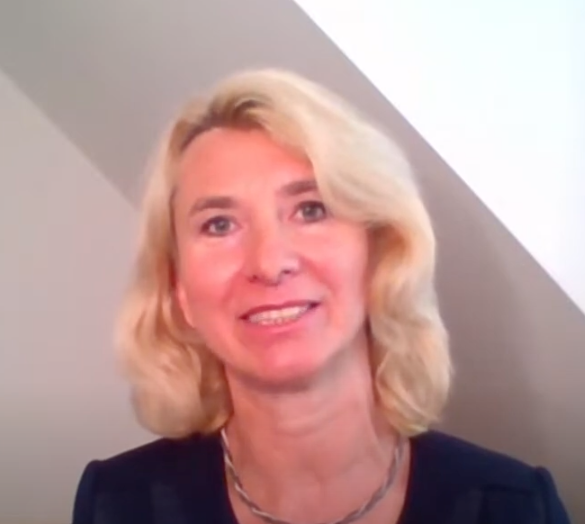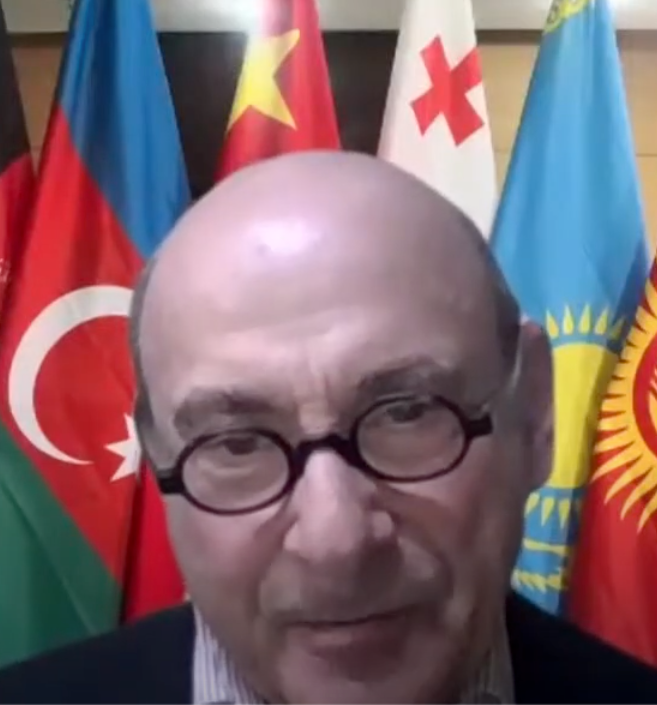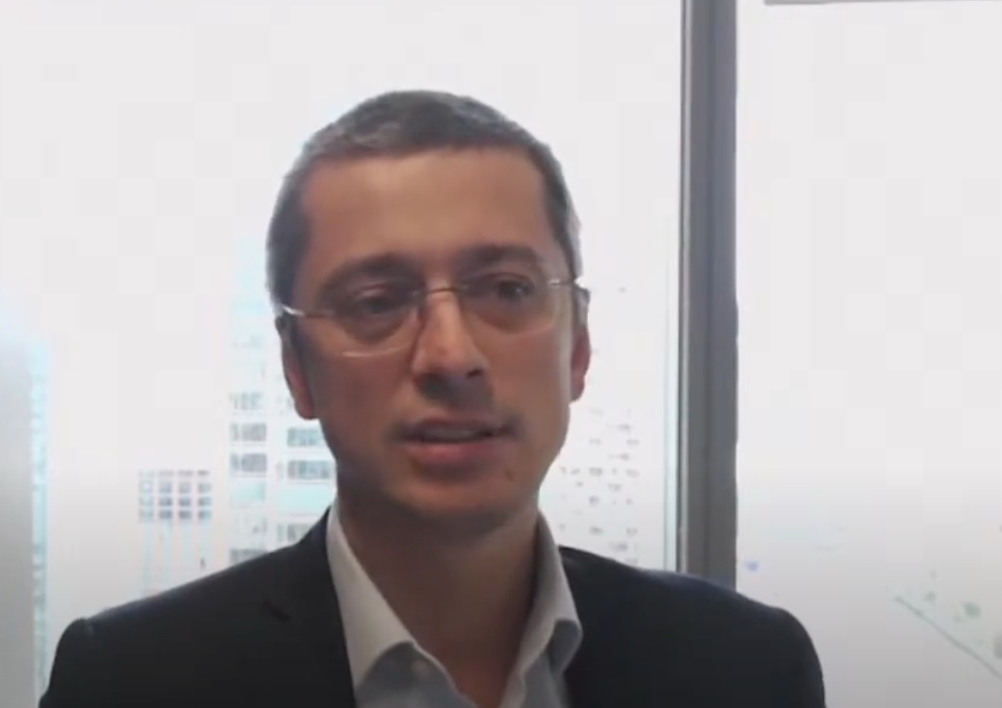ASTANA — Central Asia, a region with a rich history and immense potential, was the focus of an online panel organized by the International Monetary Fund’s (IMF) Middle East and Central Asia Department on Nov. 1, where experts discussed the growth prospects and challenges facing the region.

Central Asia, a region with a rich history and immense potential, was the focus of an online panel organized by the International Monetary Fund’s (IMF) Middle East and Central Asia Department on Nov. 1, where experts discussed the growth prospects and challenges facing the region. Photo credit: IMF.
Jihad Azour, director of the Middle East and Central Asia Department at IMF, Beata Javorick, chief economist at European Bank for Reconstruction and Development (EBRD), Nicolaie Alexandru-Chidesciuc, head of Emerging Market Economics at JP Morgan and Hanz Holzhacker, chief economist at the Central Asia Regional Economic Cooperation (CAREC) Institute shared their insights on how to boost medium-term growth and economic resilience in this landlocked and geopolitically sensitive part of the world.
Shaping resilient economies
IMF’s Jihad Azour underscored that building resilient economies across Central Asia is imperative. He emphasized that governments should maintain vigilant macroeconomic policies, especially addressing high core inflation in certain countries.

Jihad Azour, Director of the Middle East and Central Asia Department, IMF.
His recommendation was to apply a restrictive monetary policy, accompanied by bolstered central bank independence to enhance credibility. Fiscal policies also play a crucial role, according to him, because uncertainty in the global environment calls for increased budgetary buffers to weather shocks.
Azour also focused on digital finance as a potential pillar for growth. As witnessed in countries such as Kazakhstan, Armenia and Georgia, it can also provide greater access to finance, particularly for small and medium-sized enterprises (SMEs). He added that investing in human capital and social protection, coupled with efforts to enhance inclusion, is vital for sustainable growth.
“Building resilient economies is going to be the way for this part of the world that is landlocked and strongly dependent on some of their key partners,” he said.
Connectivity and trade dynamics
Azour highlighted that a different way to think about a growing economy is to build connectivity that will nurture new sources of growth.
“For example, we saw recently a rapprochement between Central Asian countries and the Gulf countries in terms of strengthening their economic ties. Therefore, building new platforms requires improving the business environment, strengthening governance, and also reducing the footprint of the state to allow the private sector growth,” he said.

Beata Javorick, Chief Economist, EBRD.
Azour’s emphasis on reorienting the region’s economies toward building connectivities aligns with the evolving trade dynamics. Beata Javorick, EBRD chief economist, highlighted that changes in trade patterns have been observed due to geopolitical tensions, particularly the Russian invasion of Ukraine. This disruption created opportunities for smaller countries in the region to engage in intermediated trade.
“However, I think this level of intermediated trade may be subsiding now, partly due to diplomatic efforts on the part of Europe and the United States [US] to limit potential busting of sanctions and to limit trade that may be contravening European and American sanctions,” she said.
According to Javorick, these relationships, built during the vacuum left by Western exporters, are likely to persist, helping to diversify the region’s economies.
She also highlighted that the Middle Corridor, formally known as the Trans-Caspian International Transport Route, stands as an opportunity amid geopolitical tensions.
“The initiative to promote and facilitate this transit route via region as opposed to the north corridor transit route via Russia is not new, but the war has given it impetus. There is a lot of political will, both in the region as well as in the West. We see greater cooperation between Azerbaijan, Kazakhstan, and Georgia when it comes to coordination of speed of customs, formalities, unifying tariffs, and trying to get rid of idle time at ports,” Javorick said.

Hanz Holzhacker, Chief Economist, CAREC Institute
As emphasized by Hans Holzhacker of the CAREC Institute, the corridor requires significant investments, and its success will rely on decisive and careful planning. According to Holzhacker, the Middle Corridor has yet to reach its full potential.
Alexandru-Chidesciuc echoed Holzhacker, saying that while the Middle Corridor offers significant benefits, such as increased trade opportunities, there are substantial investment costs involved. He highlighted the concerns expressed by companies and governments in the region regarding the financial implications of utilizing these routes, citing inflation as a significant consequence.
According to Alexandru-Chidesciuc, Kazakhstan, among other countries, faced higher inflation due to the increased costs of transporting goods through these new corridors. He anticipates that the continual rise in prices and increasing inflation will continue to pose an ongoing challenge for the countries involved.
Capitalizing on raw materials and investment risks
The experts highlighted that the region has an opportunity to capitalize on its reserves of critical raw materials amidst global export restrictions, potentially fostering a new avenue for economic growth and international trade. According to Javorick, approximately 30% of global exports of these materials are currently subjected to some form of export restrictions.
“You know, a few days ago, China announced additional restrictions on graphite exports. So here, the region has the opportunity to make more out of its reserves of chromium, barium, or antimony, as everybody will be looking for those products,” she said.

Nicolaie Alexandru-Chidesciuc, Head of Emerging Market Economics, JP Morgan.
Alexandru-Chidesciuc from JP Morgan discussed market perceptions and risks associated with the region. While acknowledging Central Asia’s solid macroeconomic picture, he highlighted the complexities arising from geopolitical tensions, driving a degree of investor hesitation.
“When you compare this region with other parts of the frontier space, let’s say either in Asia, in Africa, or even in Latin America, this region looks quite robust. But what is bad in this region? The geopolitical picture and various types of complications driving it. So, the Russian invasion of Ukraine was already discussed to a significant extent, but there is also the war between Azerbaijan and Armenia. Not currently, but you know, it is there. This complicates the decision-making process for investors,” he said.
Alexandru-Chidesciuc also said sanctions, though not expected to target entire economic sectors, are another factor at this moment in time, even more relevant than geopolitical and political risks.
“But when we talk about sanctions, it is not really like a concern that countries with economic sectors are going to be sanctioned the way it happened with Russia. It is more about specific companies and the banking sector,” he said.
According to Alexandru-Chidesciuc, foreign direct investment has been strong in the region, reflecting its attractiveness compared to other frontier markets. Nevertheless, the interest from non-resident foreigners in credit markets has declined. Alexandru-Chidesciuc attributed this decline to geopolitical and political factors.


